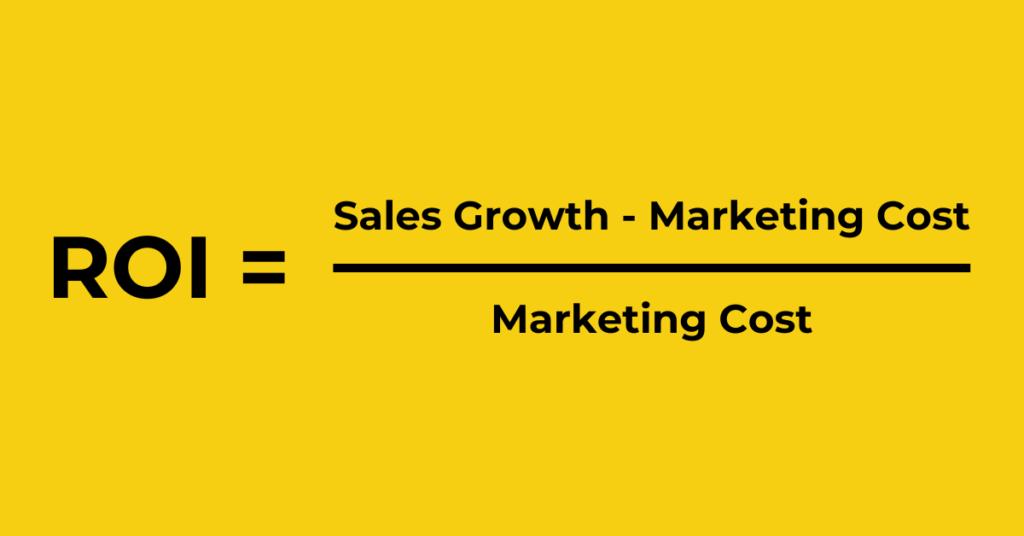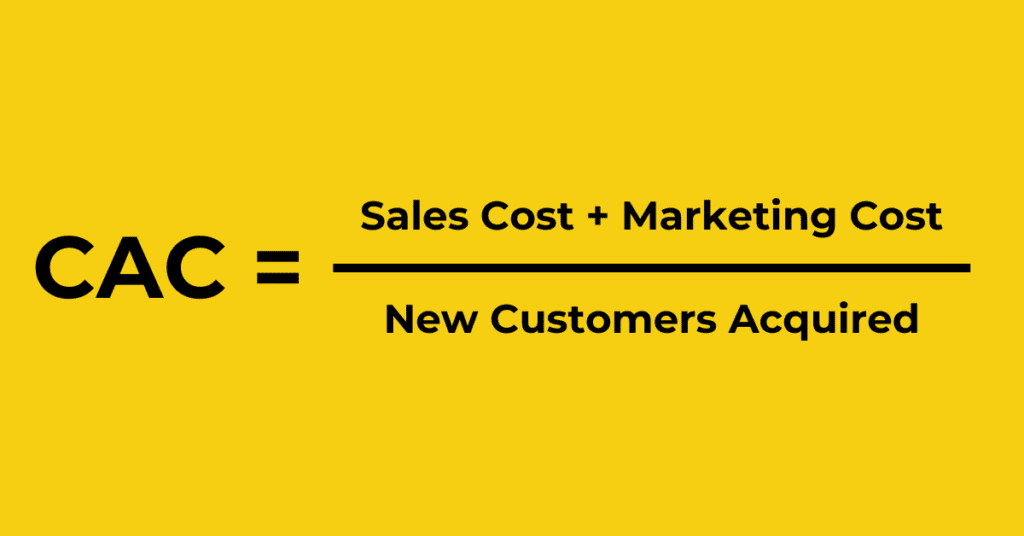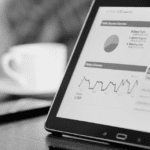In the dynamic world of HVAC services, understanding the return on investment (ROI) of your marketing campaigns isn't just beneficial—it's crucial. The goal of this article is to arm HVAC companies, including business owners and marketing managers, with the knowledge and tools needed to pinpoint the effectiveness of their marketing strategies accurately.
Introduction to ROI in Marketing
Return on Investment (ROI) is fundamentally about gauging the profitability of your investments, serving as a critical indicator that steers your marketing strategies. It's especially crucial in guiding the allocation of resources and budgeting in marketing campaigns, ensuring that every dollar spent is an investment towards future profits. For businesses in the HVAC sector, understanding and applying ROI can differentiate between thriving and stagnating in a competitive market.
Calculating ROI for HVAC companies involves a straightforward yet impactful formula:

While this formula appears simple, applying it to the intricate dynamics of service-oriented marketing presents challenges. In these scenarios, the effects of marketing efforts are not always immediately quantifiable, making it difficult to directly link investments to outcomes. This complexity underscores the need for a nuanced approach in evaluating the effectiveness of marketing strategies within service industries.
Setting Up for Success: Tracking and Analytics
Accurately measuring Return on Investment (ROI) hinges on setting clear, measurable goals and using the right tools to track progress. Tools like Google Analytics and various Customer Relationship Management (CRM) systems are crucial for gaining insights into the effectiveness of marketing strategies. A thorough system to monitor performance across different channels, such as websites, social media, and email marketing, is essential for gathering data to inform strategic decisions.
Incorporating a CRM system can significantly enhance tracking interactions and conversions, streamlining the management of customer relationships. For instance, adding Thryv (a home services industry focused CRM) to your toolkit can help optimize marketing strategies for better ROI. It automates tasks, boosts customer engagement with personalized communication, and provides detailed reports on campaign performance, making it easier to track and enhance marketing efforts subtly.
For businesses aiming to improve their marketing strategies and ROI measurement, integrating a comprehensive CRM solution is a smart strategy. Such tools lead to more informed decision-making and, ultimately, improved financial outcomes.
Analyzing Different Marketing Channels
Understanding the nuances of different marketing channels allows HVAC companies to allocate resources more effectively:
- Digital advertising, including PPC and Facebook ads, offers immediate data on user engagement and conversion rates.
- SEO and content marketing efforts may take longer to bear fruit but are essential for long-term brand positioning and organic traffic growth. Focusing on metrics like search rankings and organic traffic will be key here.
- Social media engagement and email marketing campaigns provide insights into audience interaction and interest. Key metrics include engagement rates, open rates, and click-through rates.
Understanding Customer Acquisition Cost (CAC)
Customer Acquisition Cost (CAC) stands as a pivotal metric significantly impacting your marketing ROI. Delving into the calculation of CAC unveils the total cost involved in acquiring a new customer, shining a light on the critical importance of this figure in assessing the potency of your marketing strategies. It's not just about the numbers; understanding CAC is about grasping the efficiency and effectiveness of where and how you invest your marketing budget.

In our agency, the CAC metric is central to our Growth Marketing reports. We meticulously analyze this metric to provide insights and strategic recommendations, aiming to optimize marketing efforts for better returns. By focusing on strategies geared towards reducing CAC, while simultaneously enhancing the quality of customer acquisition, we can spearhead significant improvements in your company's bottom line.
Reducing CAC doesn't just mean cutting costs—it means smarter marketing, targeting the right audiences more effectively, and improving overall customer engagement strategies. This holistic approach not only lowers expenses but also fosters a higher quality of customer relationship, which is indispensable for long-term profitability. In essence, the careful analysis and strategic application of the CAC metric is a cornerstone of Growth Marketing, enabling businesses to flourish in competitive markets by maximizing the return on investment from their marketing endeavors.
Long-term vs. Short-term ROI
Balancing short-term gains with long-term growth is indeed an art that requires a nuanced approach. In the fast-paced world of digital marketing, Pay-Per-Click (PPC) advertising can seem like a silver bullet, offering immediate visibility and results. This can be especially appealing for businesses looking to make a quick impact in the market. However, relying solely on PPC can be a short-sighted strategy. While it brings quick wins, it doesn't build the foundation needed for sustained growth.
On the other hand, investing in Search Engine Optimization (SEO) and content marketing can seem like a slow burn. These strategies take time to mature and require patience and persistence. However, the payoff is significant. SEO and content marketing work by building a solid online presence, establishing authority, and cultivating a loyal customer base. This not only ensures that your business is seen as a trusted leader in its field but also drives organic traffic that is more likely to convert over time.
Acknowledging the balance between these strategies is crucial for crafting a comprehensive marketing strategy. It's about leveraging the immediate benefits of PPC to get quick wins and using the momentum to fuel long-term strategies like SEO and content marketing. This holistic approach ensures that your business not only enjoys the spotlight today but also builds a resilient brand that continues to grow and thrive in the future.
By integrating both short-term and long-term strategies, businesses can navigate the competitive landscape more effectively. This balanced approach allows for flexibility, enabling businesses to adapt to market changes, consumer behavior shifts, and technological advancements. In doing so, businesses can maintain a competitive edge, ensuring both immediate wins and ongoing growth. This strategic balance is what sets successful businesses apart, enabling them to achieve their goals and expand their market presence steadily.
Making Adjustments Based on ROI Findings
Data plays a pivotal role in shaping business decisions. It serves as the backbone for strategic planning, especially in the context of return on investment (ROI) analysis. For HVAC companies, leveraging data through ROI analysis can significantly enhance their marketing strategies. This process involves a deep dive into which strategies are yielding substantial returns and which are underperforming. By focusing on the successful tactics, companies can allocate their resources more effectively, doubling down on the approaches that bring tangible results.
Moreover, the utilization of real-life case studies provides invaluable insights into the dynamic nature of the market. These case studies highlight the critical importance of agility in marketing strategies. In an ever-changing market landscape, the ability to swiftly pivot and adapt strategies based on comprehensive data analysis is a key determinant of a company's success and growth. It's not just about sticking to a predetermined plan; it's about being flexible and responsive to what the data is revealing.
Through a continuous cycle of analyzing, learning, and adapting, HVAC companies can stay ahead of the curve. This not only ensures their marketing strategies remain effective but also fosters an environment of innovation and growth.
Common Mistakes in Measuring ROI and How to Avoid Them
One of the major challenges in measuring Return on Investment (ROI) lies in inconsistency. This can manifest in several ways:
- Methodologies: Different approaches to calculating ROI can yield vastly different results, making comparisons difficult.
- Period Comparisons: Comparing ROI across different time periods without accounting for external variables can lead to misleading conclusions.
- Integration of Data Sources: Failing to harmonize data from various sources can skew the overall picture of ROI.
To ensure accuracy in ROI measurement, it's crucial to maintain a consistent approach across all these elements. This involves several key steps:
- Standardize Calculation Methods: Choose a standardized method for calculating ROI and stick with it across all analyses to ensure comparability.
- Account for External Variables: When comparing ROI across different periods, adjust for external factors that could impact the results (e.g., economic shifts, market changes).
- Harmonize Data Sources: Ensure that data from different sources is compatible and integrated in a way that provides a cohesive understanding of ROI.
- Regular Review and Adjustment: Regularly revisit and refine your strategies to reflect the most current data and findings. This might involve adjusting your calculation methods or the way you integrate data as better techniques become available.
- Implement Continuous Learning: Adopt a culture of continuous learning and improvement, allowing your approaches to evolve based on new insights and technologies.
By addressing these pitfalls and following a structured approach, businesses can significantly improve the accuracy of their ROI measurements and make more informed decisions based on those insights.
Community Involvement and Local Partnerships
Finally, this part highlights the often-overlooked advantages of engaging with the community and forming local partnerships. By integrating your HVAC business closely with the lifeblood of your local area, extraordinary outcomes can be achieved. We will explore optimal strategies for community involvement and guide you in establishing partnerships that broaden your influence while keeping your budget in check.
Optimal Strategies for Community Involvement
Community involvement stands as a pillar of building a positive brand image and fostering trust within your local area. An optimal strategy involves participating in or sponsoring local events, such as charity runs, school functions, or community festivals. These activities not only boost your visibility but also show your commitment to the community’s well-being. Additionally, hosting educational workshops or seminars on topics related to your HVAC services can position your business as a knowledgeable and helpful community member. Such initiatives resonate with community values and can dramatically enhance your local reputation.
Establishing Beneficial Local Partnerships
Forming partnerships with other local businesses can produce mutually beneficial outcomes, creating synergies that extend your reach while being cost-effective. Look for non-competing businesses in related sectors, such as home improvement stores, real estate agencies, or local builders, and propose cross-promotional activities. For instance, offering exclusive discounts to customers referred by your partners can incentivize them to recommend your services. Co-hosting community events or workshops also divides costs while doubling the audience. Additionally, consider leveraging local media partnerships for advertising or sponsor content to maximize your exposure without exceeding your budget.
Final Thought
The path to mastering ROI measurement in HVAC marketing is both challenging and rewarding. By deep-diving into each marketing channel, understanding key metrics, and balancing between short-term wins and long-term growth, businesses can significantly enhance their market presence and profitability. Continuously learning, adapting, and applying these insights into practice is the key to sustained success in the competitive HVAC industry landscape.
Is your HVAC company ready to take its marketing ROI to the next level? Contact us today for a personalized marketing ROI audit and discover how you can optimize your marketing strategies for maximum profitability. Also, don’t miss our comprehensive guide to HVAC Marketing, tailored specifically to HVAC businesses like yours.





